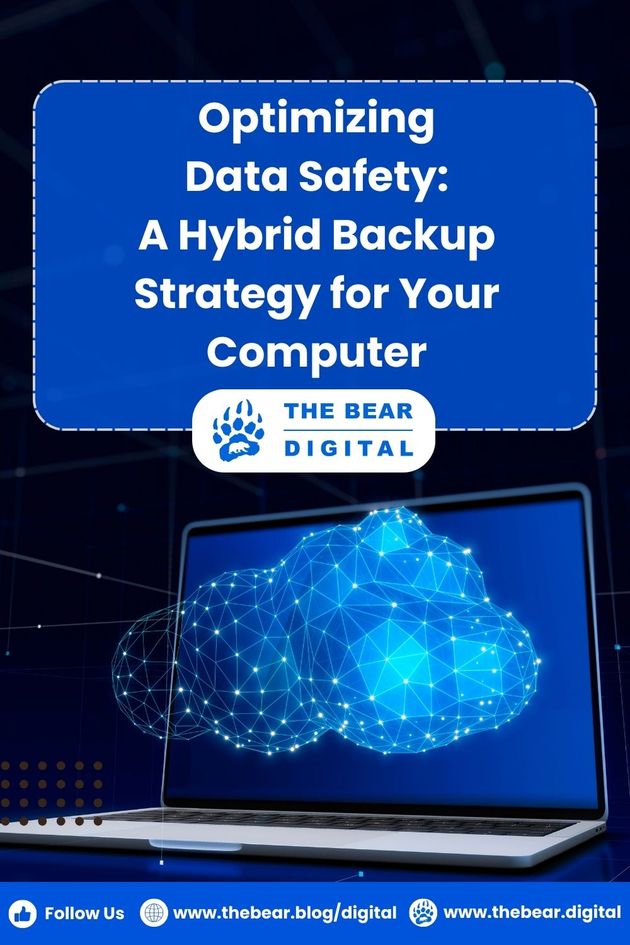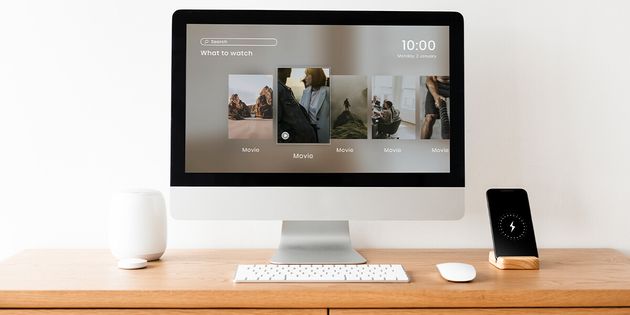
Optimizing Data Safety: A Hybrid Backup Strategy for Your Computer
Information safety in today’s technological world is essential. We depend on data for every part of our lives, from private photos to important work files. Losing access to it can be costly. A strong computer backup plan is more than a choice. Keeping our digital goods safe and easy to reach is necessary.
A mixed approach to computer backup strategy gives a good balance between backup solutions stored locally and in the cloud. Local backups make it easy to get to and restore data quickly. Cloud backups protect data even if local backup devices get damaged. When you use both ways, your digital data is fully protected. In such cases, you are ready even if you face data loss unexpectedly.
Ensuring Data Safety: A Hybrid Backup Approach
The hybrid backup method uses the best features of both local and cloud-based backup services to protect all of your info. Some important parts of this approach are:
- Local Backup
- When you back up your data locally, you store it on physical devices like flash drives, external hard drives, or NAS (Network Attached Storage) devices.
- This lets you get to your data quickly and easily, speeding up the restoration process. But remember to store these things safely to keep them from getting broken or stolen.
- Cloud Backup
- It's putting your files using Google Drive, Dropbox, or other backup services. The best thing about cloud backup is that real objects can't damage it. If your local devices get broken, your data will still be safe in the cloud.
- Also, cloud services often have versioning built in, which lets you go back to older versions of files if you need to.
- Schedule for Regular Backups
- Your info will always be up-to-date if you back it up regularly.
- This could be done every day, every week, or every month, based on how often you create and change data.
- Data Encryption
- If you back up private data locally or in the cloud, you should always use encryption.
- By doing this, you are able to add an extra layer of protection. It makes it harder for people who aren't supposed to be there to get to your info.
- Testing Your Backup
- Make sure you can recover your data by testing your backup regularly.
- Any problems should be found during a regular test, not when big amounts of data are lost.
The most complete way to protect your data is with hybrid backup, even though it takes a little more time to set up and keep up. Its mix of local speed and cloud protection guarantees that you can get your data back no matter what.
Local Storage: The Primary Line of Defense
Local storage is the principal barrier against threats when employing a hybrid backup approach. As the name suggests, local storage means keeping info on your devices. Local storage makes it possible to send and receive data quickly. You don't need to be connected to the internet to view your backups, ensuring that data restore is quick and reliable.
Data saved locally can always be accessed, even when the internet isn't connected. In cases where you need to get to your saved info right away, this is especially helpful. In the long run, local storage is a cost-effective option because once you buy the storage device, there are no more costs. When you store your files locally, you have full power over them. Your choice about who can see your backups and when and how to do them is critical.
Downsides of Local Storage
Some problems with local storage need to be considered. Local storage devices can get damaged physically by water or electricity going out. Make sure to service your devices regularly so your data is not lost. Devices that you are using can be stolen or lost. To reduce this security threat, make sure to keep them in a safe place. Modern recording devices can hold much data, but only so much. You should buy more or bigger gadgets to store more information.
Because of these possible problems with local storage, it is important to use a cloud-based backup plan to protect your data as much as possible.
Cloud Services: The Safety Net
A cloud backup is an online data copying service that uses a distant server in a data center to store and retrieve user data. Off-site storage, easy entry, and the ability to grow are all perks. Encrypting data, using two-factor authentication (2FA), using versions, and regularly checking backup settings are all important.
When you use cloud backup, your data is saved in a safe place that isn't near any possible risks, like theft or damage. You can save data in the cloud from anywhere with an internet link. This makes managing data more flexible and mobile. Most cloud services offer flexible options that let you add more storage space as your data needs grow. Most cloud services offer strong security methods such as encryption and two-factor login to keep your data safe. Many cloud services offer versioning, which lets you return to older copies of files if needed.
Even though there are many benefits to using cloud backup, it's important to combine it with local storage for full data safety.
Downsides of Cloud Storage
Despite cloud storage's many benefits, some issues must be considered when creating a mixed backup plan. One of the biggest problems with cloud storage is that you need a strong internet link. You can only get to or recover your files if you have internet. This could be a big problem when the internet could be faster and faster. Most cloud services have strong protection, but systems are only partially safe. Hackers could always try to get in and steal information.
The main cost of local storage is buying the gear, but cloud storage generally has costs that keep coming up. The exact cloud service you choose and the data you need to keep can add to these costs over time. Putting your data in the cloud is better because it's not stored on your computer, but it also means that your data is stored by someone else. Some users might feel unsafe with this, especially if they have private information.
Data sovereignty can become a legal problem depending on where the data centers for your cloud service are located. This refers to keeping data in a place other than where it was made. This can change who legally owns that data. As with any technology, it's all about picking the right tools for the job and putting them together to give you the most benefits with the least risk.
The 3-2-1 Rule: A Combined Strategy
The 3-2-1 backup rule is a set of strategies that most people agree are the best way to back up info. This rule says:
- You should have at least three copies of your info. The first is the original data, and the other two are copies. If one backup fails, you still have the other two to fall back on.
- It is very important to keep backup copies on two different types of storage. A copy could be kept on a portable hard drive (local storage) and another in the cloud. Different kinds of things help protect against different kinds of dangers.
- You should keep at least one backup somewhere else, like in the cloud. So, if something bad happens, like a fire or storm, to your local storage, you still have a copy that is not harmed that is stored somewhere else.
By following this 3-2-1 rule, you can make sure that your data protection plan covers all the bases and keeps your important data safe no matter what.
Local storage and cloud backup services work together for a strong data protection plan. The good things about one way make up for the bad things about the other, so your data is safe and easy to get to in many situations. The 3-2-1 rule makes this approach even better by giving you a straightforward way to spread your data storage and make it more resistant to threats.
Protecting your information will save you time, money, and stress later. Take your time, whether you're a person with important family pictures or a business with important data. Plan and set up your mixed backup strategy right away to feel better about the safety of your data.
Tech Bear



















